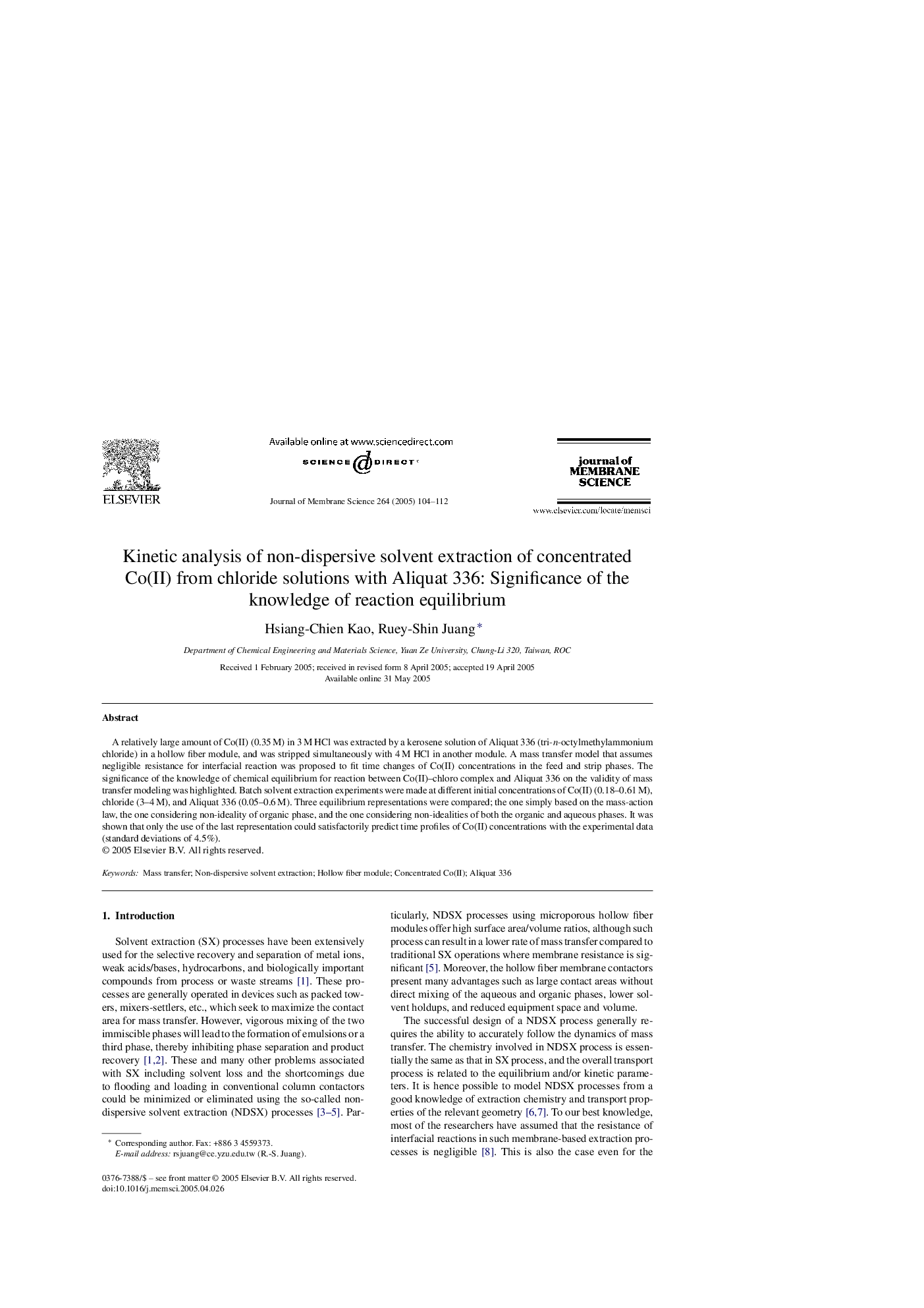| Article ID | Journal | Published Year | Pages | File Type |
|---|---|---|---|---|
| 9684636 | Journal of Membrane Science | 2005 | 9 Pages |
Abstract
A relatively large amount of Co(II) (0.35Â M) in 3Â M HCl was extracted by a kerosene solution of Aliquat 336 (tri-n-octylmethylammonium chloride) in a hollow fiber module, and was stripped simultaneously with 4Â M HCl in another module. A mass transfer model that assumes negligible resistance for interfacial reaction was proposed to fit time changes of Co(II) concentrations in the feed and strip phases. The significance of the knowledge of chemical equilibrium for reaction between Co(II)-chloro complex and Aliquat 336 on the validity of mass transfer modeling was highlighted. Batch solvent extraction experiments were made at different initial concentrations of Co(II) (0.18-0.61Â M), chloride (3-4Â M), and Aliquat 336 (0.05-0.6Â M). Three equilibrium representations were compared; the one simply based on the mass-action law, the one considering non-ideality of organic phase, and the one considering non-idealities of both the organic and aqueous phases. It was shown that only the use of the last representation could satisfactorily predict time profiles of Co(II) concentrations with the experimental data (standard deviations of 4.5%).
Related Topics
Physical Sciences and Engineering
Chemical Engineering
Filtration and Separation
Authors
Hsiang-Chien Kao, Ruey-Shin Juang,
